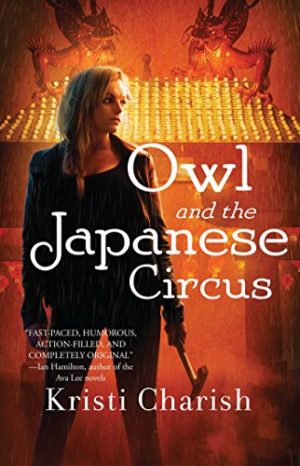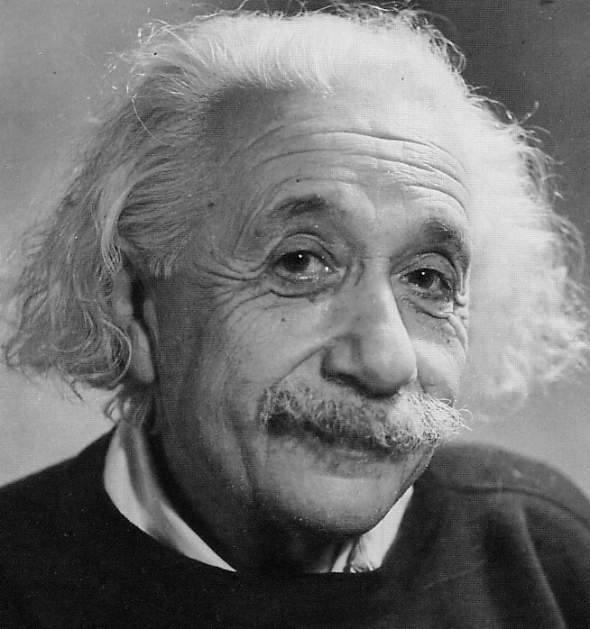5 Films to Complement Ian Sales’ Apollo Quartet
The movie list game with Ian Sales continues. I have been challenged to come up with five movies to complement his Apollo Quartet, as the concluding volume of that series, “All That Outer Space Allows,” hit stores in late April. The following list of 5 is my attempt to come up with a few good films that fit the bill. First, a few “rules”:
My Superpower: Kristi Charish (Owl and the Japanese Circus)

My Superpower is a regular guest column on the Skiffy and Fanty blog where authors and creators tell us about one weird skill, neat trick, highly specialized cybernetic upgrade, or other superpower they have, and how it helped (or hindered!) their creative process as they built their project. Today we welcome Kristi Charish to talk about how the power of molecular biology relates to Owl and the Japanese Circus. Don’t worry, I’ll save you! I’m a Molecular Biologist. That’s right. Sit back and let me tell you about the highly underrated profession known as molecular biology. First and foremost, our degrees start with a modest BSc — note the B and S are capitalized (as Erik Williams pointed out while back, an expert ranking in BS is an essential skill set for becoming a writer). Want to survive the imminent apocalypse burgeoning on the horizon? While everyone else is stockpiling weapons, ammo, and canned goods us molecular biologists have everyone beat. We’ll be figuring out how to purify water, grow food, and synthesize antibiotics…Heck, with our collective minds, we’ll have a fully functional biodome up and running in no time, distillery and all (we’re talking about molecular biologists after all). A collective of highly educated researchers and molecular engineers living in peace and harmony while the apocalypse rages on outside…
Feed the Machine: Blunderdome

This week’s Feed the Machine will be a little different. Before I go on, here is the link to the article in question: Following the missteps of giants — Phys.org It’s a short article, more a review than a science article really, but it got me thinking, and I want it to get you thinking. Why would one of the most respected scientists of the 21st century knowingly make such a blunder? Beyond this, what if, on an alternate earth, there was a scientist who was so respected, so smart, so right about everything, that her discoveries weren’t examined? In fact, they were taken as LAW the moment she set them down to paper? What if the world conformed to her laws, even when they were wrong? What if it didn’t? What if someone called her on it? Imagine a
Adventures in SF Parenting: From Stern to STEM

One big benefit of opening a toy store is that when my kids arrive there after school, we are all stuck in the same space together and for the first time in YEARS, I get to help them with their homework! “Years?! What a horrible mother! You should have been supervising them THIS WHOLE TIME!” Yah, yah. Bite me. My kids have been better at their schoolwork than I am since 3rd grade. I gave up a while ago. However, they just started Algebra when they hit 7th grade, so we all get to puzzle it out together. This is both nice and frakking awful. Though I have internalized the mantra, “All are capable of math. There is no such thing as a ‘a math person,’ there are only those who give it a chance and those who do not,” I still struggle with some of the simpler concepts. However, now that I’m older, I do find that I can *enjoy* the struggle. Somehow, probably completely by accident, both of my daughters also seem to enjoy math and both recognize that it can be useful in their chosen “hobbies”. MoMo (#1) is an artist. She works on paper, but is already better at digital production and reproduction of artwork than I will ever be. I have the benefit of a (slim) digital media background and have been able to give her the tools and basic education she needs to learn how to create digital masterpieces. It is a joy to watch her grow in her love of the medium. Whether she was inspired by comic books, video games, cartoons, or what, I have no idea. However, she obsessively watches YouTube videos of people drawing random things (seriously, HOURS) and is exploring the realms of Manga and Anime. Granted, we raised her up right by forcing her to watch Studio Ghibli films on an endless loop – Clockwork Orange style. Messy Jessy #2 is a scientist/engineer/punky brewster. Her favorite toys from about age 3+ were Magnetix. Basically, if it let her build something, she could spend hours building random shit. From simple octagons, to massive buildings with parapets and flying buttresses. Her passion is construction, so every time we found a science kit that allowed her to explore this avenue, we did so. The cavern under her bed is a treasure trove of robotics. She is the proud owner of a soldering gun and a java programming manual (seriously, would someone *please* write a java programming instructional book for kids? I’m disturbed by the lack of them). Anyway, this past summer we were lucky enough to be able to encourage our daughters passions even further. Parents should be the first line of inspiration into math and science careers, with public schools following closely on their heels. However, it is exceedingly important that the surrounding community also offer programs that support these career paths. This not only benefits a child’s education, but it also benefits the county and city coffers. Tech businesses don’t stay in California’s Silicon Valley due to the cheap rent, they stay due to the sustainable brain capital. It’s practically splitting at the seams with generation after generation of IT workers – the 60+ year olds who founded the industries, the 40+s who turned them into powerhouses, the 20+s who spawned a new generation of web-based technologies, and the 5+s who are sitting at home on their parents I-pads, exploring technology in ways that my generation only saw in Science Fiction TV. The communities that want to capitalize on the new creative economy of the US are the ones that will institute programs that create these budding technologists. My daughters were participating in one such program. It was a partnership between a local youth based educational initiative and a Community College in the town where my parents live. For the cost of a Youth Recreational Summer Camp, they attended what were, essentially, college classes for a week. The one week program included more classes than I can even remember and gave children the freedom to explore numerous future careers and hobbies. MoMo took a class on digital art, which included instruction in Corel Painter and Adobe Photoshop. She learned how to interact with a drawing tablet, manipulate existing images, and create original artwork. Though the teacher left something to be desired in the personality department, the class gave her the information she needed to take her art to the next level. She now wants to figure out how to animate her work and I suspect she’ll begin designing Flash games sooner rather than later. Messy Jessy spent a week learning about different types of Engineering. With WOMEN! This was such a crucial experience for her, as it is for most young girls. Women still only account for a minimum proportion of STEM jobs, though the number of women receiving degrees in STEM fields has increased. It is difficult to say what societal pressure causes girls to not pursue math and science, but the pressure is there and so a great effort must be made to overcome it. Jess’s “Women in Engineering” course introduced the all-female class to a new field of Engineering every day of the week, hosted by a woman in each specific subset. They did projects in fields that ranged from Bio-Medical Engineering to Environmental Engineering, Electrical and Aeronautic. They touched a human heart while exploring artificial heart valves and MacGuyvered a set of Earphones. Basically, it was just frakking amazing. Will either of my daughters choose a career that is related to the respective courses they took this summer? I have no idea. Nor do I care. As a parent, I must encourage them to follow their passions, but when they are no longer passions, I must allow them to choose another. Honestly, if there is only one thing that I learned from Science Fiction and Fantasy, it’s that choosing your own path in life is the key to happiness. However, for now, I’ll keep
Guest Post: Getting Rid of the Evidence by Lincoln Crisler

Whether you’re a mercenary in a dystopian future, a hardcore serial killer or the reconnaissance unit of the King’s Army, bodies are a fact of existence. Corpses are a pain in the ass, though. You can’t just leave them lying around. They tend to attract attention. They stink. Worst of all, they may hold incriminating evidence, or prove to your enemies that you were somewhere you’d rather they didn’t know you were. And we can’t have that. So, without further ado, here are the three most unique methods of body disposal I can think of. * PIGS They can eat the whole body, including the bones. Brothers Robert and Donald Duvall beat two hunters to death and fed them to pigs, and the Swine Method kept them out of the slammer for damn near two decades. They were only prosecuted and sentenced after a witness came forward with information. Other such incidents include those involving a father of 50, a man disposed of so his friend could collect his pension and a farmer’s wife. BODY LIQUEFACTION An environmentally-friendly alternative to cremation, the process is described in a BBC article as “submerging the body in a solution of water and potassium hydroxide which is pressurised to 10 atmospheres and heated to 180C for between two-and-a-half and three hours,” after which the remaining bone is crushed in a cremulator, just like the bone fragments left behind by cremation. The liquid remains are to be flushed into the sewer system, which has, understandably, generated controversy for a number of reasons, to include respect for the dead and sanitary concerns. BLACK MARKET ORGAN DONATION It’s not perfect. You have to know how to properly extract the organs, you have to know how to preserve them, and you need access to a trustworthy person who has money and a network. Pulling it off, however, would yield a benefit most methods of corpse disposal do not: a cash payoff. In some countries, organ sale is legal and regulated. In others, there’s merely a healthy black market. The latter folks aren’t likely to ask many questions, since they’re already disposed to such measures as holding people at gunpoint and removing their kidneys after tricking them into thinking they’ve been hired for a construction job. If you have to get rid of a body anyhow, why not make four or five figures in the process? It would certainly leave a smaller mess to clean up through more traditional methods. —————————————————————- * Obviously, if these were completely foolproof, we wouldn’t know they’d been done, but don’t be a wiseass, huh? LINCOLN CRISLER is the author of two short story collections (Despairs & Delights, 2008 and Magick & Misery, 2009) and one novella (WILD, 2011) and the editor of Corrupts Absolutely?, Damnation Books’ forthcoming anthology of dark superhero fiction. His work has appeared in a variety of print and online publications, to include HUB Magazine, Shroud Publishing’s Abominations anthology and IDW‘s forthcoming Robots vs. Zombies anthology. A United States Army combat veteran and non-commissioned officer, Lincoln lives in Augusta, Georgia with his wife and two of his three children. You can contact him at lincoln@lincolncrisler.info.
Nature Magazine: No Humans Allowed (Plus a Question For Listeners)

Have you heard? NPG, the folks behind Nature, the scientific journal, have banned Homo sapiens from submitting to their magazine: To the dismay of many (yet to the delight of a few), Nature Publishing Group announced today that its flagship journal, Nature, will no longer accept submissions from humans (Homo sapiens). The new policy, which has been under editorial consideration for many years, was sparked by a growing sentiment in the scientific community that the heuristics and biases inherent in human decision-making preclude them from conducting reliable science. In an ironic twist of fate, the species has impeached itself by thorough research on its own shortcomings. The ban takes effect on 12 September and will apply to those who self-identify as human. Authors will be required to include, in addition to the usual declaration of competing financial interests, the names of all humans consulted in preparation of the submitted work. Other journals are likely to adopt a similar policy. Of course, the above is all a bit of humor, but can you blame them? When you read the whole thing, it starts to make a lot of sense. Why are humans doing all the science? We’re faulty fleshbags, after all! But the real question is this: Will we ever see a future in which machines/robots/half-humans/non-humans do all of the science for us? I suspect yes, but it probably won’t be in my lifetime. Non-humans have been playing a major role in science for a long time, but humans have always been needed to parse out the details. We have to do the interpretation. But our reign will be short lived. Eventually someone will invent an AI or robot or not-quite-human who can do roughly the same work — only better. That will be an interesting day, no?

